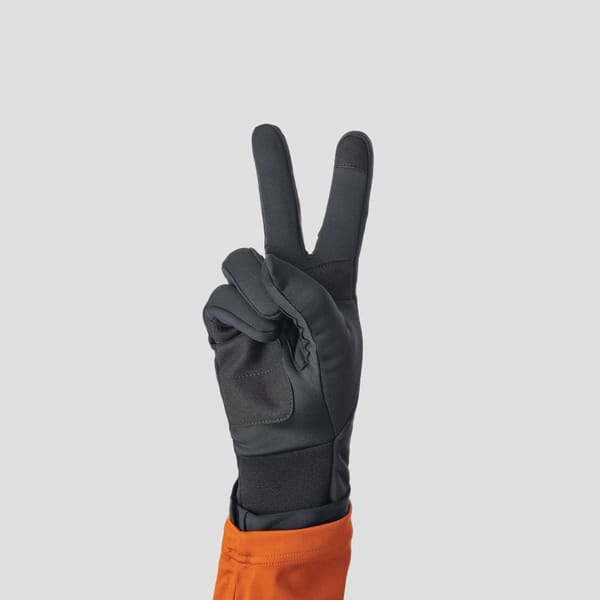The Hidden Language of Your Heart: A Realistic Look at HRV
Discover how heart rate variability (HRV) can be your secret weapon for smarter training and better recovery. Learn what HRV is, how to measure it, and why context matters.

The Beat Between the Beats: Why Heart Rate Variability Matters
Heart Rate Variability (HRV) has become the new darling metric in endurance and fitness circles, and for good reason—when interpreted properly, it can reveal a lot about your body’s readiness to train. But before you add another complicated chart to your life, let’s demystify HRV and explain why it may be the single best metric you’re totally misunderstanding.
What Exactly Is HRV, and Why Should I Care?
You already know about heart rate (beats per minute)—that straightforward measure of how fast your ticker is thumping. HRV goes deeper. It looks at the time intervals between each heartbeat. Surprisingly, your heart isn’t (and shouldn’t be) a metronome. If your heart beats consistently at exactly 60 BPM (with precisely 1000 milliseconds between beats), that means there’s zero variability. And that’s… not great. You actually want some fluctuations because variability indicates a responsive, adaptable system.
Generally, higher variability is associated with better recovery and a parasympathetic-dominant state (a fancy way of saying your body is calm, rebuilding muscle, and feeling zen). Lower variability might suggest your sympathetic nervous system is hogging the spotlight, which can happen when you’re stressed, fatigued, or running on fumes.
Sympathetic vs. Parasympathetic—Wait, What?
Quick crash course: your autonomic nervous system has two main branches:
- Sympathetic (Fight or Flight): Mobilizes energy, ramps up your heart rate, and gets your body ready for action.
- Parasympathetic (Rest and Digest): Calms you down, supports digestion, and helps the body repair itself.
If your HRV is in the gutter, it can be a sign you’re not getting enough recovery time in that yummy, parasympathetic zone. But there’s a catch: HRV is impacted by practically everything—sleep, altitude, food, last night’s spicy tacos, you name it. That’s why context and consistency are everything.
Why Athletes & Coaches Are Leaning on HRV
1. Early Warning System
Think of HRV as a weather vane (but for your heart). Is it dipping or spiking all of a sudden? Maybe you’re on the verge of catching a cold or dealing with jet lag. Perhaps you had a giant burrito at 11 PM. By tracking HRV over time, you can spot anomalies before they wreck your training plan.
2. Travel & Altitude
Jetting off to a big race across multiple time zones? That alone can affect your HRV. If you see a trend of downward HRV after a flight, maybe it’s worth an extra day of R&R or lighter training to adapt to the new environment. Alternatively, if you train at altitude, watch how your HRV responds to decreasing oxygen availability over days or weeks.
3. Overtraining Check
One bad night of sleep might not derail your entire plan, but two or three nights in a row? Pay attention if your HRV remains stubbornly low. This can indicate that you’re not catching up on vital parasympathetic recovery—time to pivot your workouts or rest more before you dig yourself a bigger hole.
4. Lifestyle Insights
Certain dietary choices can push your HRV down (looking at you, late-night pints of ice cream or alcohol). Similarly, your HRV might plummet if you’ve been skipping out on hydration or stress management. The data can become a friendly nudge to make lifestyle tweaks (or a smug, blinking reminder of those late-night streaming binges).
So, How Do I Measure HRV without Losing My Mind?
You have two main options:
- Electrical Measurement (Chest Strap)
A strap-based monitor provides a direct look at electrical signals from the heart, which can be more accurate. The downside: you might not want to wear it to bed, let alone around the house. However, for morning readiness readings, a chest strap can do wonders if you can stand the minor inconvenience. - Light-Based Measurement (Wrist Sensor, Finger Sensor, or Ring)
These use photoplethysmography (a fancy term for shining light into your capillaries). They’re more convenient for 24/7 wear but can be thrown off by movement, cold extremities, and even calluses. If you have circulation issues or a particularly bony wrist, you might see readings that make no sense.
Consistency Is Key
Whichever device you choose, measure at the same time daily under similar conditions. For many, that’s first thing in the morning—ideally, after hitting the restroom but before your cup of coffee. Keep still, breathe normally, and record a couple of minutes so you get a reliable snapshot. Also, give it a few weeks of daily readings to establish a true baseline; an isolated number without context is basically meaningless.
When to Seek Help (Because Not Everything Is About Training)
- Significant, Unexplained Drop: If your HRV suddenly tanks for several days and you’re dragging physically and mentally, it might be more than just training fatigue. Consider talking to a health professional.
- Wildly Erratic Data: If no sensor in the world can get a consistent reading, or your device is claiming you slept a total of 11 minutes, it might be time for professional help or a different gadget.
- Chronic Low Scores + Symptoms: Everyone has a unique baseline. But if you’re chronically on the low end and also battling ongoing fatigue, insomnia, or mood issues, you may need a deeper medical look.
The HRV Reality Check
HRV is not your new overlord—treat it like a supportive teammate. Use it to spot trends, confirm hunches, and refine your training approach. Don’t let a single wacky reading intimidate you out of a workout when your body feels raring to go, and don’t blindly follow an app’s color-coded advice if you know it’s ignoring an important factor (like your weird new allergy to pollen).
Ultimately, HRV is just one piece of a puzzle that includes your rest, nutrition, mental health, and that elusive sense of “how you’re really feeling.” It can be snarky at times (telling you you’re a wreck when you think you’re fine), but it doesn’t have the final say. You do.





